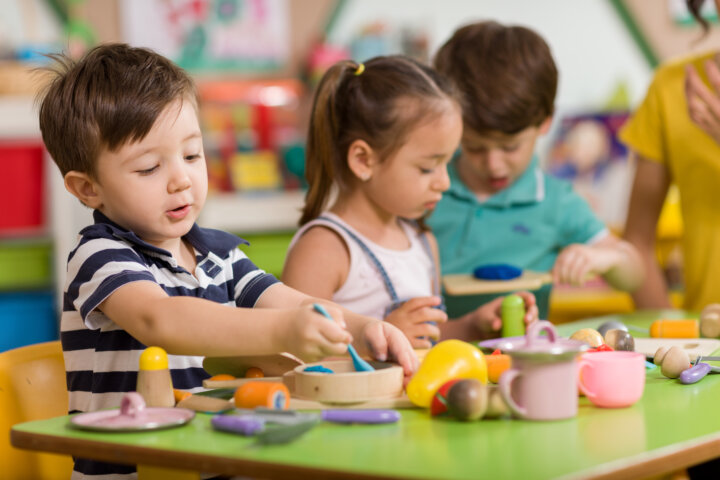Children´s collaborative technology-mediated storymaking: Instructional challenges in early childhood education
Ewa Skantz Åberg har undersökt vilka aktiviteter som uppstår när sexåringar instrueras att berätta med digital teknologi i förskoleklassens literacy-praktik.
Ewa Skantz Åberg
Professor Niklas Pramling, Göteborgs universitet Annika Lantz-Andersson, Göteborgs universitet
Docent Eva Hultin, Högskolan Dalarna
Göteborgs universitet
2018-05-25
Children´s collaborative technology-mediated storymaking: Instructional challenges in early childhood education
Institutionen för pedagogik, kommunikation och lärande
Children´s collaborative technology-mediated storymaking: Instructional challenges in early childhood education
The overarching purpose of the present thesis is to contribute to the understanding of what kinds
of activities emerge when children in two Swedish preschool classes are instructed to create
stories in collaboration by the use of digital technologies. For the present thesis, this entails
empirically studying children’s storymaking activities with an analytical focus on the interaction
between the children, the teacher and the cultural tools used. What motivates the research is the
expansive digitalisation that increases children’s access to technology and experiences of digital
texts from an early age. The development raises questions about how these wider social and
cultural changes transform children’s literacy activities within the institutional context and what
challenges it poses to literacy education. The theory underlying the thesis is a sociocultural
perspective grounded in the epistemological view of learning as contingent on social interaction
taking place in situated and sense-making contexts and encompasses available cultural tools.
Another premise is that narrative genre, which often serves as a means for engaging children in
their early reading and writing, constitutes an essential mediator for communication and sense
making. The data material was generated through video observations of 16 storymaking activities
involving two preschool teachers and 16 six-year-old children. The films were partly transcribed
and analysed according to the principles of Interaction Analysis. Additionally, 15 digitally
produced stories were collected. The thesis consists of four empirical studies and an extended
summary where the overall findings show what primarily mediates the children’s storymaking and
contributes to the participants’ level of success in establishing sufficient intersubjectivity to
perform the task, is the teachers’ organisation of the activities, the introduction, the contingent
scaffolding strategies, the design of the selected technologies and the children’s common
experience of popular culture. The findings show that the children, while practicing the ability to
collaboratively negotiate an intelligible story, must simultaneously learn how to operate the digital
technologies, which to some extent proves to be demanding and implies a subordination of the
narration. At the same time, the activities and certain inherent qualities of the technologies appear
to contribute to an aesthetic experience as the children, while narrating, build upon their cultural
experience and use their repertoire of semiotic means, such as verbal and written language,
images, colours and forms. A noticeable difficulty is the transformation between means, for
example from the verbal to the written, or to the visual art. These difficulties largely depend on
the governed laws of the semiotic means but are also evoked by the teachers’ scaffolding and the
meaning potentials offered by the technologies. The pedagogical challenges lie in finding a
coherent alignment between learning goal, form of instruction and support, and choice of
technology.
Relaterade länkar

Svenska som andraspråk
 Åk F–Vux
Åk F–Vux
När leken inte fungerar
 Fsk
Fsk


